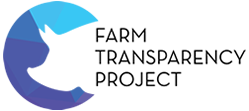News & Media > Editorials > A Life Sentence - Marine Animals in Captivity
A Life Sentence - Marine Animals in Captivity
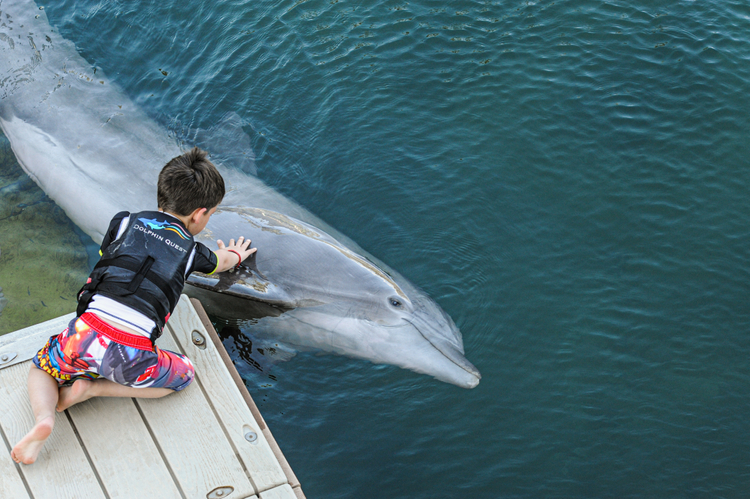 A dolphin living in captivity. Image: Jo-Anne McArthur / We Animals
A dolphin living in captivity. Image: Jo-Anne McArthur / We Animals
In spite of the ongoing, overwhelming evidence of the physical and psychological impacts of captivity on marine animals, there are still numerous marine parks operating around the world and in Australia. The confinement and breeding of marine animals in captivity is often justified under the guise of conservation, despite a majority of those species not having endangered or threatened status in the wild. Pinniped and cetaceans are complex, emotional, and intelligent creatures, who naturally swim in wide-open waters without the walls of a tank confining their movement.
Marine parks serve no genuine educational purpose and exist only for profit and the amusement of humans. Forcing animals to lead miserable lives for nothing more than entertainment is hugely outdated, and not in alignment with the public expectation regarding the treatment of animals.
Connection to dolphin slaughter
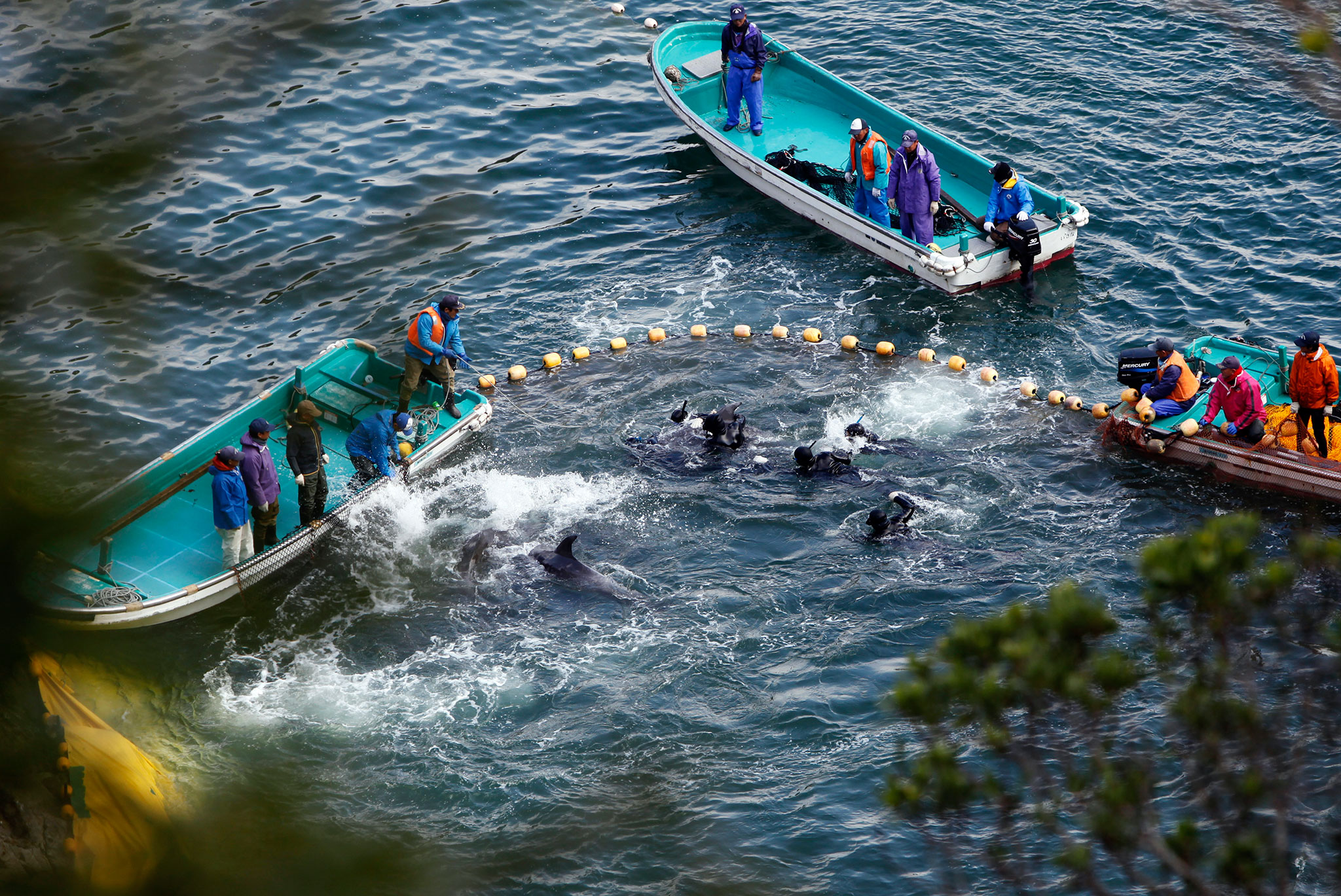 The dolphin drive in Taiji, Japan. Image: The Dolphin Project
The dolphin drive in Taiji, Japan. Image: The Dolphin Project
Despite the widely held belief that marine animals are no longer ripped from their families in the wild, the practice sadly persists in some parts of the world, including Japan and Russia. All methods of wild capture are traumatising and can even be fatal for cetaceans; many involve them being chased, grappled with, and hoisted aboard a boat where they are forced into a shallow holding tank. The wild capture of dolphins in Japan is linked with drive fishery practices in Taiji, Japan. Boats produce loud noises underwater to frighten dolphins into shallow water; the ones with the most desirable physical traits are selected to be sold to marine parks, the trainers sometimes taking part in this process, while the rest are killed for their meat. The sale of dolphins for exhibition bolsters up the dolphin slaughter industry, with live dolphins selling for up to 150,000USD and dead dolphins fetching around 600USD each. The sale of live dolphins presents a financial incentive for drives of dolphins to continue.
Forced to perform
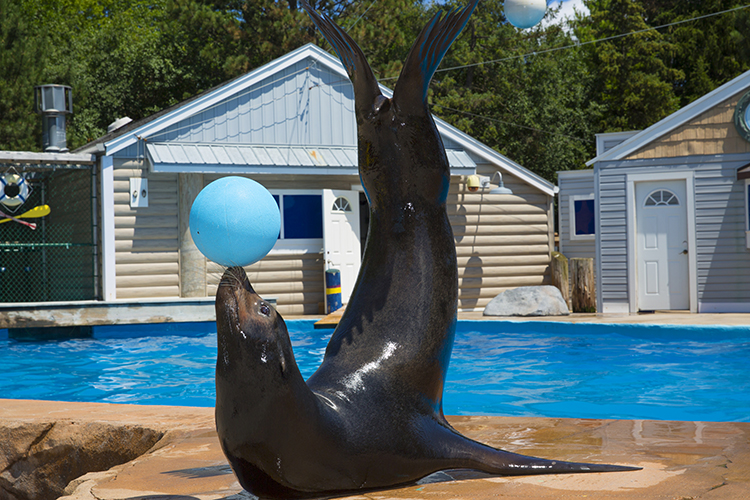 A seal performing in a marine park show. Image: Pete Amland / UWM photo
A seal performing in a marine park show. Image: Pete Amland / UWM photo
Pinnipeds and cetaceans in marine parks are often subjected to cruel training practices and humiliating shows, reinforcing the false belief that animals exist purely for human use and entertainment. The most commonly used training method in captivity is ‘operant conditioning’, which utilises food as ‘positive’ reinforcement. Sadly, for many animals in captivity, this means they must perform tricks in order to satisfy their hunger.
Inappropriate, deprived housing
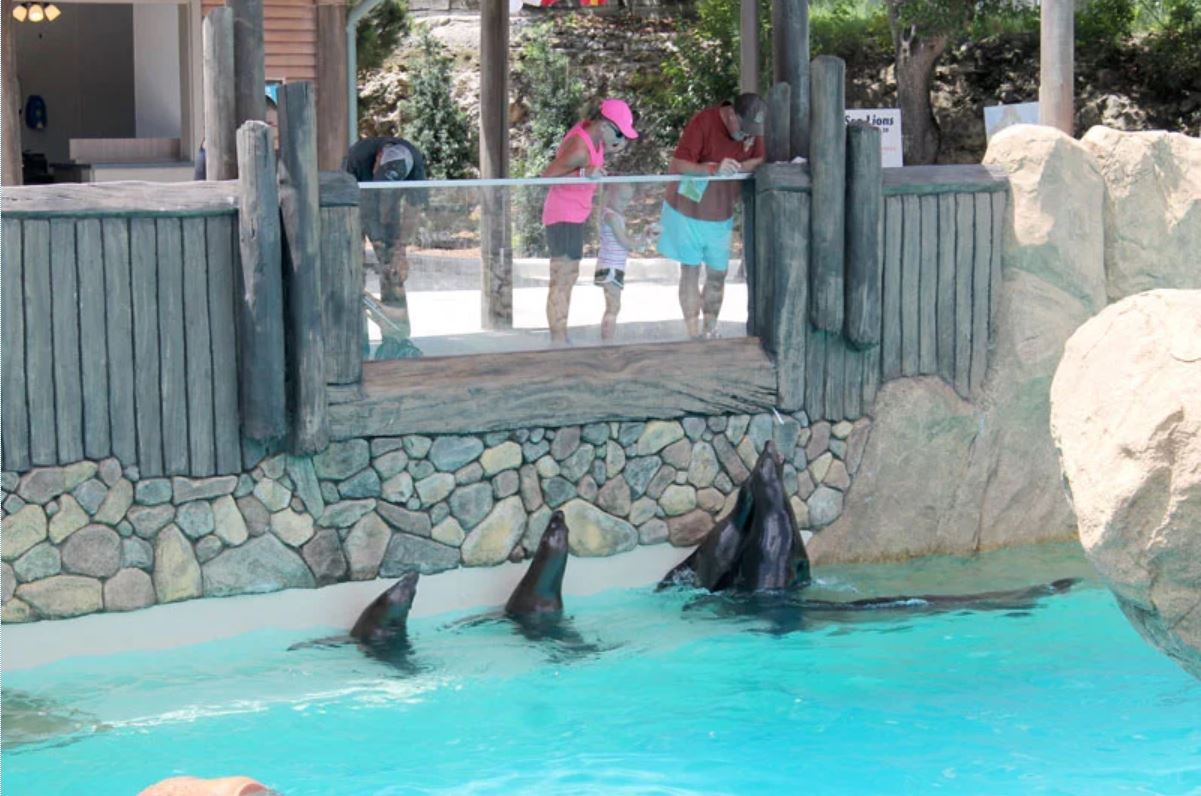 Seals in a concrete pen.
Seals in a concrete pen.
Marine parks house pinnipeds and cetaceans in both concrete and sea pens, with each presenting a unique set of devastating welfare concerns for the animals held inside. Concrete pens are primarily designed to ensure animals can be displayed to and viewed by the public with ease. Pens are often situated in spaces with many noise disruptions such as roller coasters and music. Many of the marine animals housed in captivity rely primarily on hearing and sound to navigate themselves, meaning the audible properties of tanks such as water pumps and filtration machinery are problematic. Animals in tanks are seldom given anywhere to ‘escape’ to when they want time away from crowds or other animals, which is a feature common even in zoo environments.
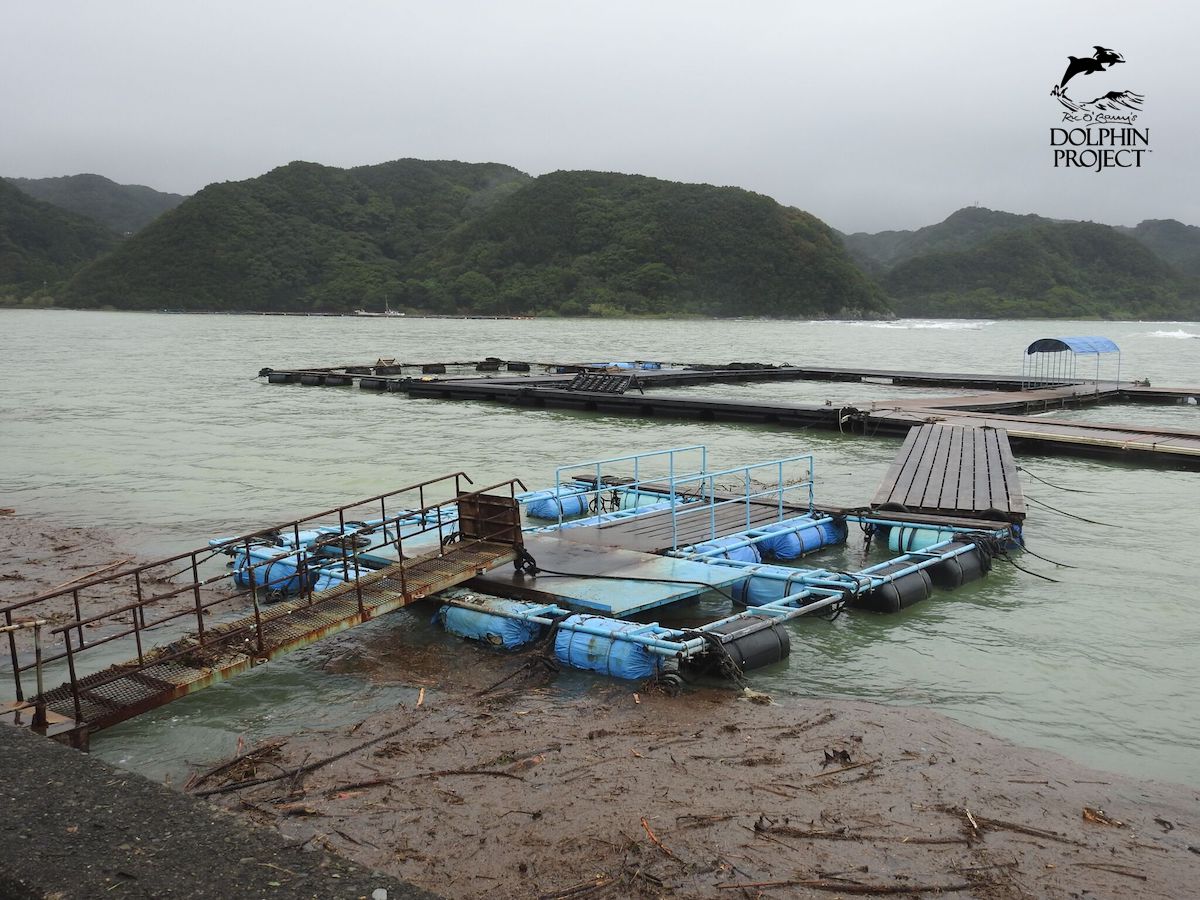 A sea pen after a storm.
A sea pen after a storm.
Sea pens are often wrongly perceived to have higher welfare than concrete pens. They are often situated in close proximity to sources of pollution, such as sewage outfalls and runoff from roads. Marine animals in sea pens are frequently exposed to huge amounts of noise disruption too, such as from boats and jet skis. Sea pens are also more accessible to members of the public than concrete pens, leaving animals vulnerable to human interference, posing a greater risk of injury or death. Further, sea pen housing means animals are faced with a higher risk of being harmed by weather disasters such as typhoons or hurricanes. Subsequent to these weather events sea pens are often filled with debris, with injured or even deceased animals inside.
Resulting health issues
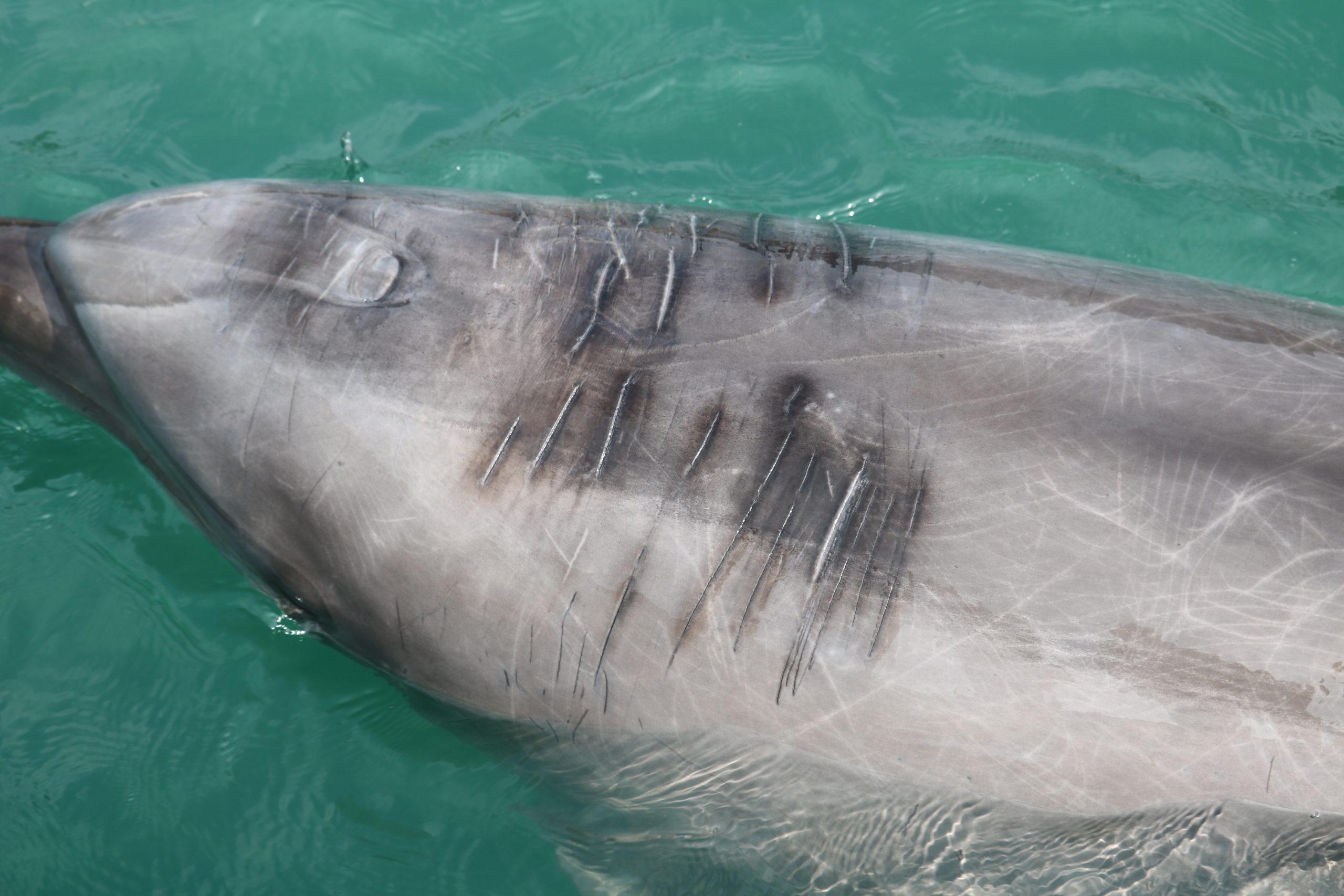 A dolphin with rake marks over their back.
A dolphin with rake marks over their back.
Exposure to vector-borne diseases, infection from raking and self-harm, poor dental health and bad eye conditions are all health issues inherent to the keeping of marine animals in artificial environments. Additionally, there are a number of illnesses experienced more regularly and intensely in captive environments.
Captive marine animals are exposed to ultraviolet rays from the sun far more frequently than they would in the wild, which can cause cataracts, lesions and eye infections. Captive marine animals are also known to exhibit self-harming stereotypy such as rubbing their teeth on the walls and bars of their enclosure. This behavior is associated with boredom and frustration, and results in the poor dental health of animals.
Raking is a way dolphins assert dominance over one another and involves running their teeth across the body of another dolphin. In captivity, there is nowhere for victims of raking to escape, leaving them vulnerable to injury and subsequent infection. In fact, there are two recorded cases of dolphins dying due to an infection caused by raking.
What can I do?
The good news is - it doesn’t have to be this way. We can play an important role in protecting marine animals from confinement and exploitation in the name of entertainment in a number of ways:
- Never, ever visit a marine park.
Marine parks are able to continue operating and generating profit only because people visit them, so it is absolutely essential to never give these places your hard-earned money. There are plenty of places you can visit and see dolphins in their natural habitat, from a safe and respectable distance. - Educate your friends and family.
It can be upsetting when you learn that friends or family members might support the marine park industry, but remember they may be unaware of the true cost of keeping animals in captivity. Education is often the key to changing the perspectives of those around us.
- Support the Dolphin Project
The Dolphin Project is a non-profit organisation dedicated to the welfare and protection of dolphins around the world. In 2009, the organisation released an explosive documentary, ‘The Cove’, exposing the interconnectedness of the dolphin slaughter industry and marine park trade. The Dolphin Project works not only to halt the brutal slaughter of dolphins, but also to rehabilitate captive dolphins for retirement and release. If you can, please donate to their critical work.
References
https://awionline.org/sites/default/files/uploads/documents/AWI-ML-CAMMIC-5th-edition.pdf
https://www.dolphinproject.com/


